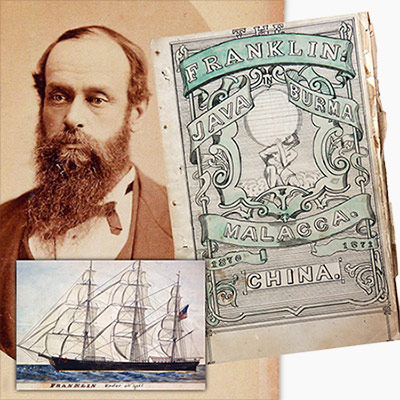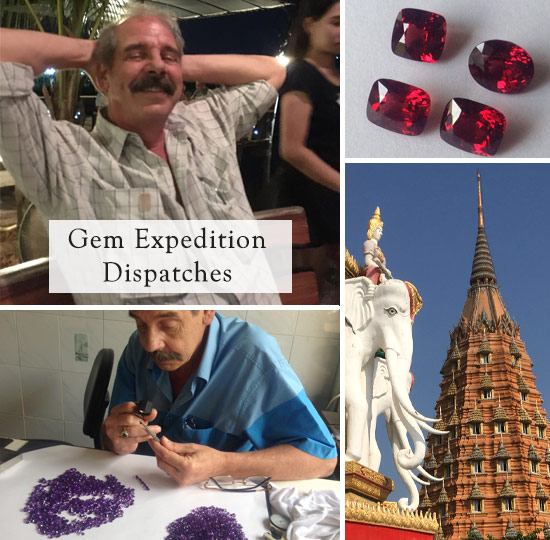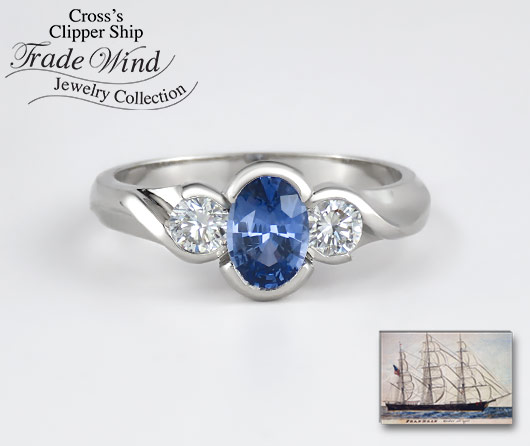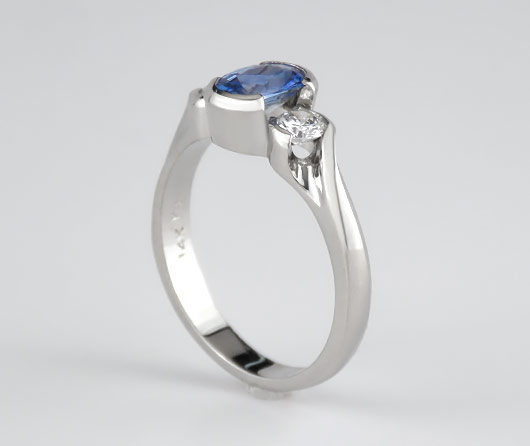What all Sailors Know
My finest moment on the sea was in my first sail boat, the day I launched it. It was a pram, with a square Viking-like sail. The boat was small, close to the water. I remember the push of the wind.
I launched my first boat on an August afternoon. The tide was high, the clouds were dark, thick gray. There was a storm coming. The wind was steady. I took the boat out on the bay. The boat was small, low, close to the water. I remember the push of the wind.
The moment I will always remember was just a few minutes before It started to rain. A huge gust caught the sail. The boat surged ahead. I remember the sound of the water, the wake the boat created, the strain on the mast and stays, the dark sky, and the little waves racing on the bay. I remember the pull of the tiller. I remember the forces on the sail and the push on the boat.
I have felt the same thing in bigger sailboats. I have seen the wind whipping across the water, riffling the surface of the sea. I have felt the wind catch the sails (traditional sails). I have felt the boat lean and I have felt the force on the rudder, it’s all the same, a 7′ boat or 42′ boat. But, the first time alone in a sailboat with a serious wind, backed by a real storm was the absolute best.
Our ring called “Fair Winds and Following Seas” is about a day of blue sky and full sun. The thing that is common between my first day alone in that small sailboat and the name of this ring is the wind and that pure pivot point of pressure on the sail and a stronger gust and how that feels and how that moves the boat.
This ring is beautiful. It looks lovely on any woman that chooses to wear it. The woman that truly should have this ring, or one of its sister rings, is someone who knows sailboats and someone who really knows and understands the wind.
The Gems
Blue sapphire – Blue sapphire comes from Southeast Asia. It’s a color nature feels generous with in this part of the world. We love blue, particularly blue that shows well after the sun goes down. We tend toward a lighter brighter true blue color in all of our sapphire pieces.
Diamonds – world sourced, all natural diamonds cut in Belgium. Well-cut with a full complement of 58 facets, rating a 3 on our quality cut scale. Nice white color, beautifully matched. Hardness 10.
Why a Cross Sapphire is the Best
We love blue. We know blue. We live by the blue sea, beneath summer blue skies. Our business is located on a peninsula called Portland, surrounded by saltwater on three sides. We can feel the blue ocean pulsing with every tide. From the rooftop of our building, we can see the open sea. Binoculars show ships coming and going on a blue, blue sea.
We love blue sapphire: It is bright, brilliant and is amazingly durable. As the second hardest gem to diamond, it is a highly wearable gem, ideal for rings. We love blue sapphire…we love it so much that we have traveled to southeast Asia to find first-choice colors. We choose a lighter, brighter blue than most American jewelers because it shows up best under a wide range of real-world lighting conditions. Our blue sapphires look and perform best on everything from sunny days to a candlelit dinner for two.
We want your blue sapphire to dazzle you, dazzle your partner and everyone in any room you visit. Cross’ blue sapphires are the best.
About the Trade Wind Collection:
Where does inspiration come from? Where do the creative sparks for design begin? For Cross’ new Trade Wind Jewelry Collection, we find ourselves drawn into the story of Captain John Henry Drew, from Gardiner, Maine. Born in 1834, he grew up the son of a Ship’s Carver, and went to sea at the age of 15, eventually becoming Captain of a series of clipper ships, and traveling from New York to China and back home, when that voyage took more than seventeen months.
Instead of carving or knotting or other hobbies that were characteristic of sailors, this mostly self-educated man read books, memorized details from newspapers, and wrote about his journey—his literal and his inner journey. His hand-written and personally illustrated journals tell us of his longing for Maine, for his family, and for “making something of himself”. He is very much like you and me, and it makes his story that much more compelling. He savors apples from home, as tasting better than apples from anywhere else. He imagines the scene he might see looking in the window at home, where his family sits, and he chastises himself for not getting more done at home when he was there.
The jewelry in our Trade Wind Collection is made by his great-great-great grandson, Keith. This young man went to sea as well, at age 18. As part of his service to the US Navy, his travels took him to many of the same places his great-great-great grandfather’s clipper ships visited. Keith also had a hobby unconventional for sailors— he had a fascination for gems and he studied gemology. He studied so that when his service was completed, he could become a jeweler. As Keith traveled the world, he collected exquisite gems, and after leaving the service and returning home, he mastered the art of fine jewelry making.
It is now decades later. We met Keith for the first time in March, 2014. We were impressed with his jewelry, and as we talked further, discovered he had a clipper ship sea captain ancestor and became intrigued with the parallels of his journey in life with that of his sea captain forebear.
The parallels in the two stories are expressed in the jewelry itself—the exotic colors, the flow of the designs, the attention to detail which is something passed down in this family—whether it is to protect the ship, its cargo and its crew, or to create a design that will last and protect its valuable gems, giving the wearer the same pleasure we experience when a ship at full sail goes by. You can’t help but stop and exclaim, “Isn’t that beautiful?”
We were hooked by this story, and by the jewelry. We think you will be too. In fact, we’re posting pages from Captain Drew’s journals from the Voyage of the Franklin in 1868. Take a few minutes to join in the journey, and think of those you love most, and rejoice if they are right there with you.

Read the Captain’s
Clipper Ship Journal Entries

Read Keith’s Gem Expedition Dispatches






